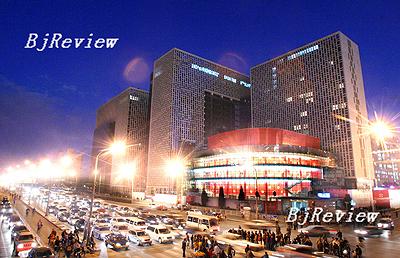Source:
10-31-2008 16:09
Mei Lanfang Grand Theater opened to the public in late November 2007. The theater is located at the north end of the Financial Street, Xicheng District. It is a fan-shaped building with a stylish steel and glass structure. The interior of the theater features some key ingredients in traditional Chinese architecture such as magnificent bright red columns and walls, which are often seen in royal palaces.
 |
| The theater was named after the late Mei Lanfang (1894-1961), a brilliant Peking Opera artist |
The theater was named after the late Mei Lanfang (1894-1961), a brilliant Peking Opera artist. Mei served as the first President of the National Peking Opera Co., which was founded in January 1955. With outstanding performing skills, Mei's reputation was unrivaled in the recent history of Peking Opera. He was also widely respected for his patriotism. In the 1930s and 1940s when the Japanese army invaded China, Mei directed and performed operas that called on Chinese people to fight against the enemies and save the country. He refused to perform for the Japanese army and stayed away from the stage for eight years. During that period, he supported himself and helped friends and former colleagues by selling paintings and pawning his belongings.
A bronze seated statue of Mei is placed at the center of the lobby, which stands 1.5 meters tall and 2.5 meters wide. Dozens of wooden circular embossments portraying the history of Peking Opera were mounted on the walls. In the old days, Chinese operas were staged in boisterous theater houses, which also served foods, drinks, fruits and other snacks during the performances. The building is configured according to acoustic science and equipped with hi-tech devices to produce amazing high fidelity audio effects. Wu Jiang, President of the National Peking Opera Co., said that the theater was meticulously designed to let every audience enjoy high quality performances.
The three-story theater has seats for more than 1,000 people. Ticket prices range from 50 to 2,080 yuan ($7-285). There are seats for handicapped persons as well. The theater is easily accessible by car, bus and metro.
Although designed for Beijing Opera, the theater will also stage other types of performance, such as dramas, plays and musicals.
Editor:Yang Jie
